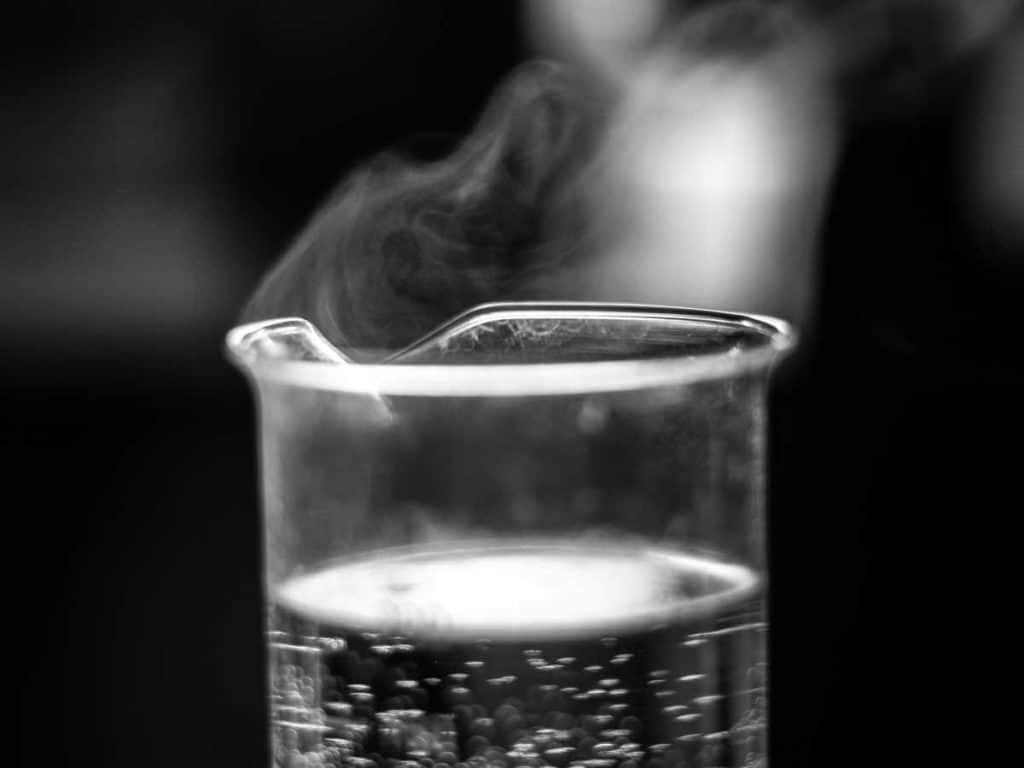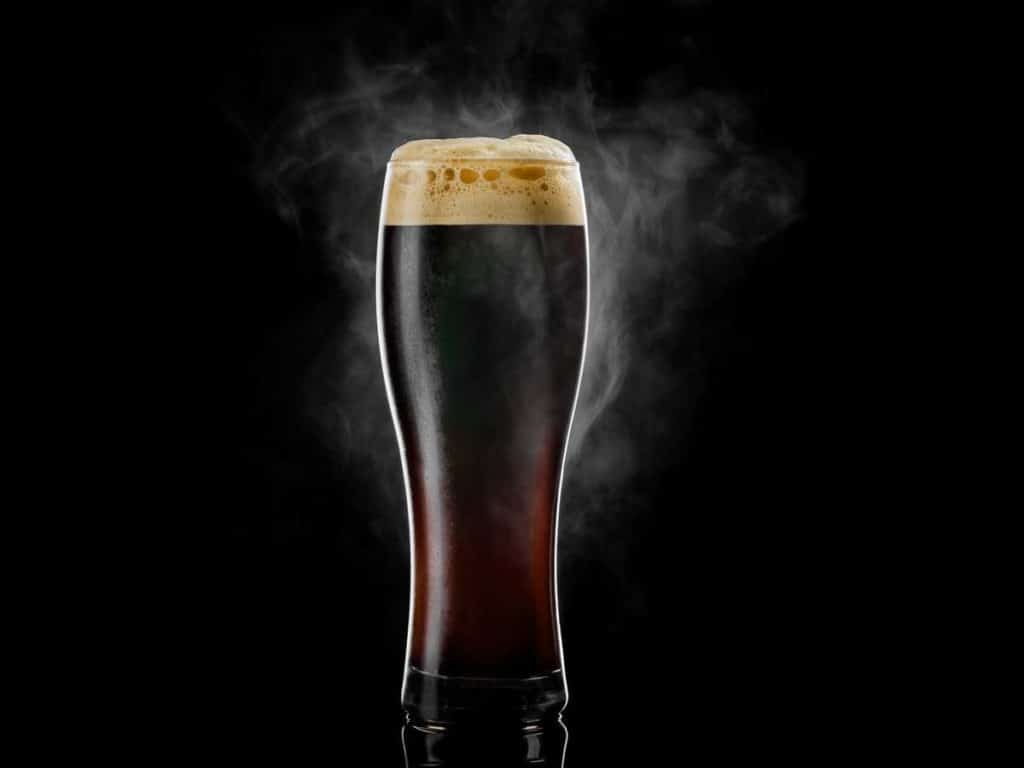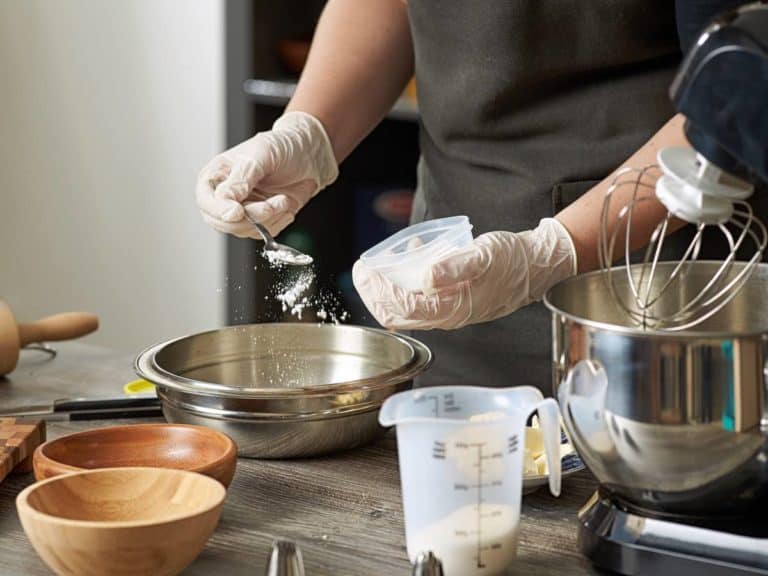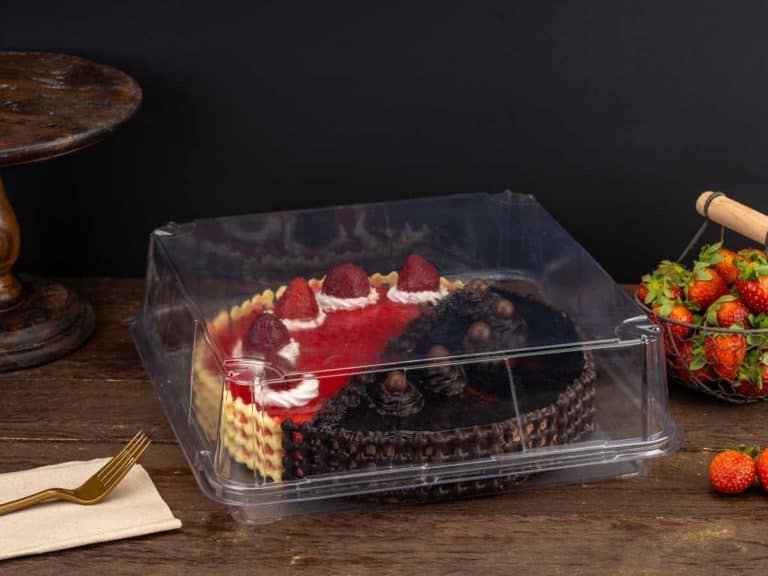How Fast Does Alcohol Evaporate [At Room Temperature and When Boiling]
You’ve used alcohol in several instances. You drink it. You use it to clean or disinfect. You probably also cooked with it. While you use it, you might leave the bottle open. As you look at that open bottle, haven’t you wondered about this question: How fast does alcohol evaporate?
In general, all alcohol products evaporate, but at different speeds. For instance, ethanol evaporates about 5 times faster than water. Beer can lose 30% of its alcohol in 12 hours. Wine can lose 1% of its alcohol in 2 hours. And 70% ethanol can evaporate in 30 seconds.
However, it’s a lot more complicated than that. There are plenty of factors at play. These factors include temperature, air pressure, humidity, surface area, and wind speed. You can learn more below on how fast alcohol evaporates.
Evaporation
Here’s a bit of chemistry crash course to explain evaporation.

Evaporation is the process of liquids turning into gas. In a liquid, the molecules are attracted to each other enough for them to always make contact. But they are loose enough to move around and flow. However, these molecules constantly want to be free. Think of them like birds in a big cage. The birds seem composed inside the cage and they don’t try to break free.
But as soon as you leave the cage door open, they fly off. When those liquid molecules escape, they turn into gas or vapor form. The cage door that keeps those from escaping is the air pressure in their environment. It’s as if the air pressure from the environment is pushing down on those liquid molecules. So the liquid molecules can’t escape and turn into vapor.
So how can you help those liquid molecules push back so they can escape?
You can do many things. One thing is to put the liquid in an environment with a lower air pressure. That scenario is why liquids evaporate faster at higher altitudes. In those places, air pressure is lower.
Another thing you can do is give those molecules more energy so they can push back. And we give them that energy through heat. That is the reason liquids evaporate faster at higher temperatures.
Boiling Point
The boiling point is the temperature at which a liquid boils. You say that a liquid is boiling when the pressure of its vapor form is the same as the pressure of the surrounding surrounding air.
The boiling point of every liquid is different. The difference is because of their unique molecular structures.
The boiling point also changes at different air pressures. At sea level, water boils at 212 °F (100 °C). At higher altitudes where the air pressure is lower, the boiling point is also lower. So in a place like Denver, which is about 1 mile (1.6 km) above sea level, water boils at 202 °F (94.4 °C).
All alcohols have a boiling point lower than water. At sea level, ethanol boils at 173 °F (78.37 °C).
So why do you need to know about boiling points? Because liquids with lower boiling points evaporate faster. The molecules of these liquids don’t need as much energy to escape their liquid form and turn into vapor.
Other Factors That Affect Evaporation
Besides temperature and pressure, there are other factors that affect how fast a liquid evaporates. We’ll go through quickly below
Surface Area
Evaporation occurs on the surface. The liquid molecules at the bottom can’t turn into vapor. The reason is that they have other liquid molecules on top of them. Hence, the larger the surface area, the faster evaporation happens.
Humidity
Humidity is the amount of water molecules in the air. For water, the higher the humidity, the slower the evaporation. The reason is that the air already has lots of water vapors. Hence, it can only take in a few.
But in the case of alcohols, the higher the humidity, the faster the evaporation. The reason is that the water vapors draws out the alcohol. It’s like how salt draws out water.
Wind Speed
The higher the wind speed, the faster the evaporation. Remember that evaporation happens on the surface. So the first vapors that form tend to hang out just above the surface. These vapors can be reabsorbed back into the liquid. A high wind speed would sweep these vapors away. When swept, those vapors can’t be reabsorbed back into the liquid. Plus, new ones from the liquid can take their place.

Alcohol Evaporating From Drinks
So you now know that alcohol and water evaporate at different rates. But how fast they evaporate changes when they are mixed together, like in drinks. How fast either evaporates depends on the alcohol by volume (ABV). Liquors usually cap off at 40% ABV because at that point, water and alcohol evaporate at the same time.
So if you leave a 40% whiskey open overnight, it should be around 40% alcohol the next day. But it might not taste the same. Because the molecules that give the flavor tend to evaporate faster. In drinks with lower ABVs like beer and wine, the alcohol will tend to evaporate faster.
Cooking With Alcohol
When you cook with drinks like wine, the alcohol will evaporate faster than the water. However, you can’t assume that you will burn off all the alcohol when you’re done cooking. How fast alcohol evaporates when cooking depends on many factors as well. Among those factors is the size of the cooking vessel.
An old study in 1992 found that cooking always results in some, but not total, loss of alcohol. A more recent study in 2016 also found that cooking with beer still ends with some alcohol in the final dish. Although they estimated that the highest amount of ethanol left per serving was 1.28 g. That amount isn’t a concern for most people.
A rule of thumb many cooks follow is to cook the food for at least 3 hours to be sure they burn off the alcohol. After that time, if any alcohol still remained, it shouldn’t be much to be concerned with.
Alcohol Evaporation
Now let’s say all factors we talked about are equal. Below is a ranking of the evaporation speeds of different alcohols. The fastest is 1 and the slowest is 5 Also indicated is their concentration.
| Alcohol | Evaporation Speed Ranking |
|---|---|
| Ethanol Disinfectant – >70% | 1 |
| Ethanol Disinfectant – 60-70% | 2 |
| Liquor – Average ABV of 37% | 3 |
| Wine – Average ABV of 11.6% | 4 |
| Beer – Average ABV of 4.5% | 5 |
Below is an alcohol burn-off chart from the US Department of Agriculture. It shows how much alcohol can remain in different cooking methods.
| Cooking Method | Percent of Alcohol Left |
|---|---|
| Alcohol added to boiling liquid & removed from heat | 85% |
| Alcohol Flamed | 75% |
| No heat, stored overnight | 70% |
| Baked for 25 minutes, alcohol not stirred into the mixture | 45% |
Here’s how much alcohol will be left If you simmer dishes after:
- 15 minutes : 40%
- 30 minutes : 35%
- 1 hour : 25%
- 1.5 hours : 20%
- 2 hours : 10%
- 2.5 hours : 5%
As you can, the longer you cook less alcohol will be left in your dish.
Related Questions
Does ethyl alcohol expire?
Ethyl alcohol, along with isopropyl alcohol, alcohol-based sanitizers, and rubbing alcohol have an expiration date. But that date doesn’t mean the alcohol “goes bad”. It means by that time, much of the alcohol would have evaporated.
Does ethyl alcohol evaporate faster than isopropyl alcohol?
Isopropyl alcohol has a boiling point of 180.5 °F (82.5 °C). Ethyl alcohol has a boiling point of 173 °F (78.37 °C). Hence, ethyl alcohol evaporate faster than isopropyl alcohol.




![How To Store Matzo Balls [With Recipes]](https://foodwine.com/wp-content/uploads/matzo-balls-235150240-768x576.jpg)
